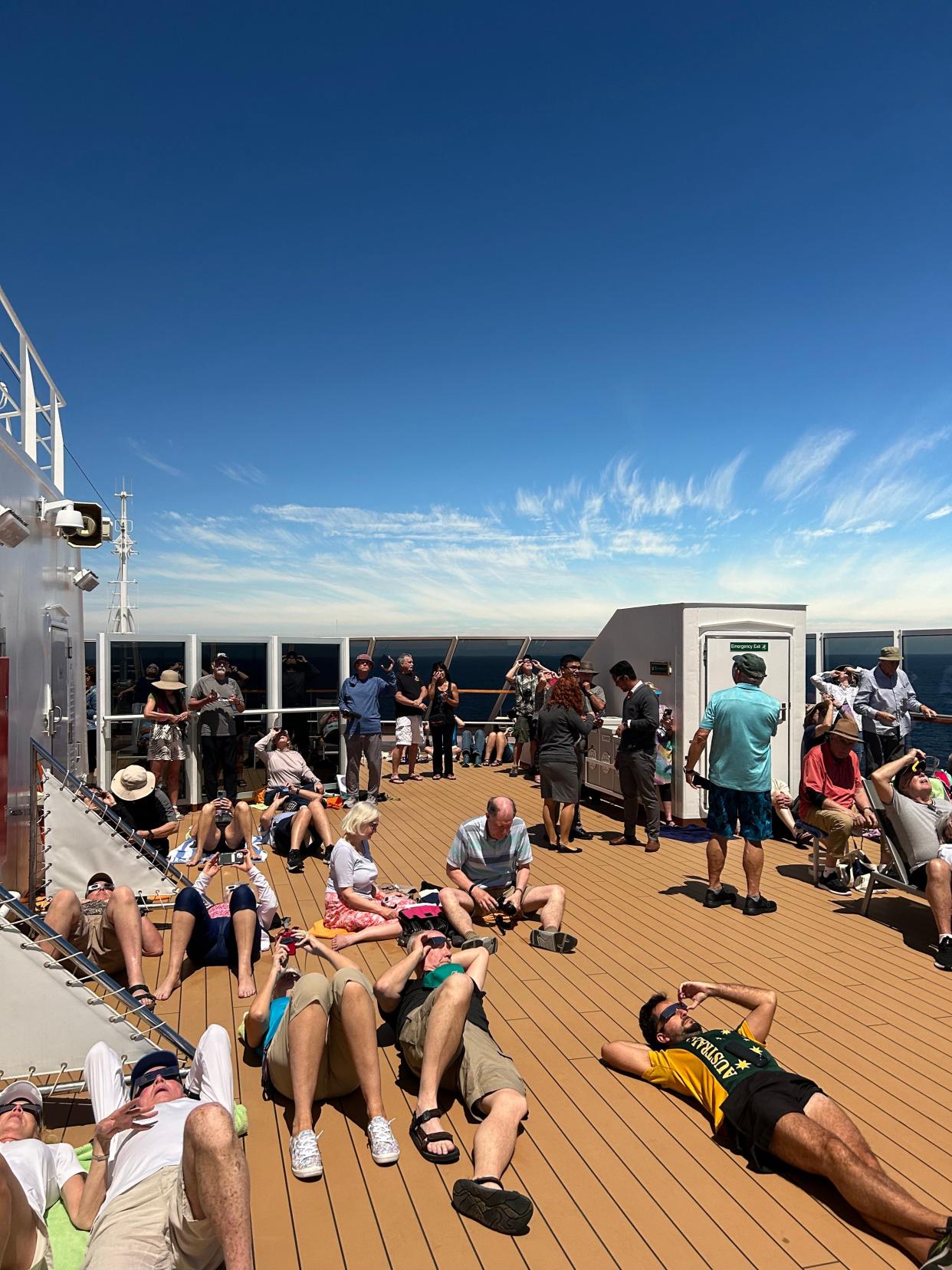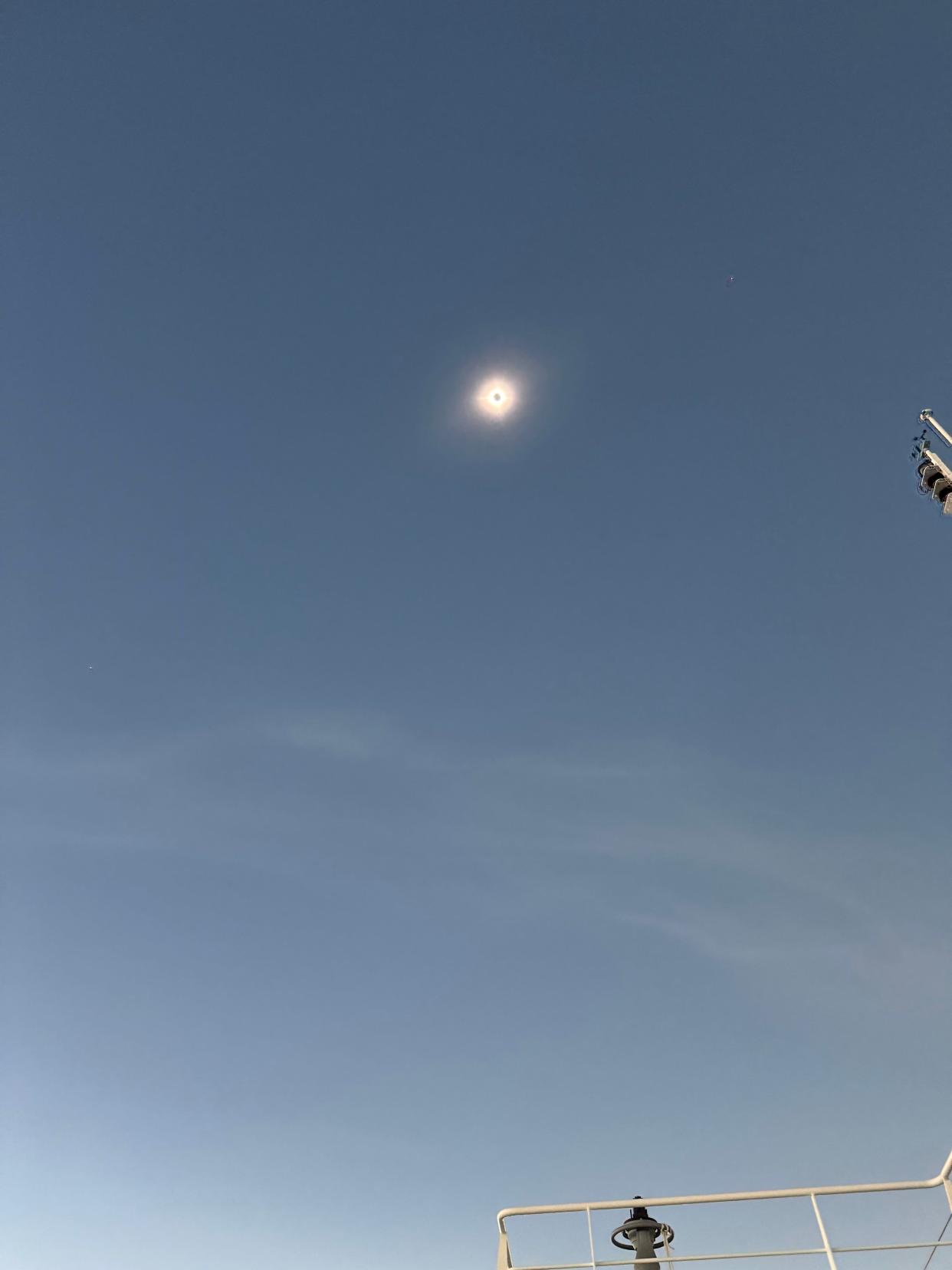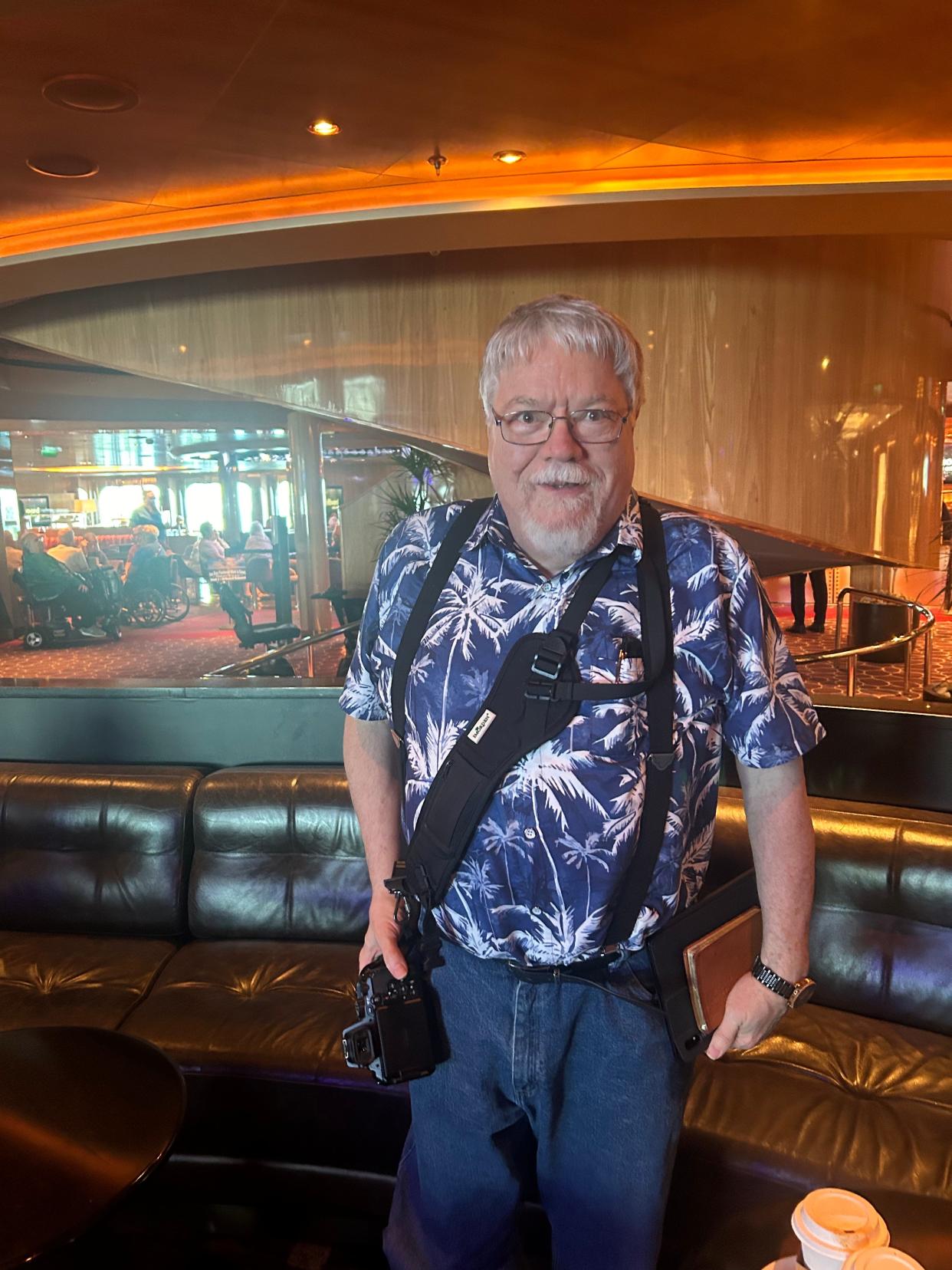'The ship can move': Why you should watch next solar eclipses from a cruise ship
Cheers broke out on Holland America Line’s Koningsdam ship when the total solar eclipse began on Monday.
Off the coast of Mazatlan, Mexico, passengers were perched on loungers, reclining on beach towels and lining the railings of Deck 14 with cameras on tripods at the ready. When the sliver of fiery orange that remained of the sun disappeared, a black circle ringed by white light took its place. Passengers applauded the moment they'd been awaiting since the ship departed from San Diego on Friday.
The sunny, 72-degree weather – quintessential cruise weather – gave way to chilly wind and late morning’s best impression of sunset. The horizon line glowed orange in the dusky sky.

Cruise ships can help take guests to the path of totality for eclipses, allowing passengers to get a prime viewing spot and make a vacation of it.
What is a total solar eclipse?
A total solar eclipse occurs when the moon completely blocks the face of the sun as it moves between the sun and Earth.
While the sun is about 400 times bigger than the moon, the moon is roughly 400 times closer to Earth. “In the past, the moon was much closer, and in the future, the moon will be much further away,” said Adam Burgasser, a professor of astronomy and astrophysics at the University of California, San Diego, and director of the Cool Star Lab, who served as an onboard expert during the cruise. “And so we're in a special time, which, of course, lasts for billions of years, where it's set up just right to block out the sun.”

Total solar eclipses take place about every 18 months on average, but the last one visible from the U.S. was in 2017.
The phenomenon creates a multi-sensory experience, with a cold front moving in ahead of the eclipse. “You block the sun, and it gets cold,” said Burgasser. “It’s actually just that simple. And it's slow enough that the atmosphere can react.”
Plants and animals respond, too: Birds often begin to chirp, plants may close up, and nocturnal will come out. “It’s kind of an all-around-you experience where it's not just the fact that the sun has been blocked that’s so fascinating, but just the effect it has on the entire environment.” Those effects weren’t easily discernible on Koningsdam, though, which was about 150 miles from shore.
Nicole Chaput, a 57-year-old passenger from Calgary in Canada, said partial and total eclipses are “totally different.”
“I heard someone describe it as being partly pregnant,” she said. “You can’t do it. There’s no comparison.”
What makes a cruise a good place to see an eclipse?
Bad weather can wreck even the best-laid viewing plans. If a city in the path of totality has overcast skies, it can be tough to quickly move to an alternate site.
“If you're on a cruise ship and a little bit farther to the east or a little bit farther to the west along the path, there's clear sky, the ship can move,” said Dan Jarrell, who was on the cruise with his wife, Kay, and friends. The Washington, D.C.-area resident has seen solar eclipses with friends during two other sailings, including on Holland America’s Veendam in 1998.
“If you're on land and there's not a road there, you’d better have a tank,” Jarrell said.

That’s where a cruise ship comes in handy. “Having the ability to map out based on what the current weather is where you can catch the eclipse, and having a range over the course of the ocean where you could chase that a little bit is certainly helpful,” Burgasser added.
Capt. Ane Smit, Master aboard Holland America’s Zaandam for the viewing, said the ship can move at a maximum of 20 knots, so the crew needs to scout out the conditions with enough time to move as needed.
“If it's not good enough, we really need to start finding another spot because we are not the quickest vehicle, of course, to be driving around, but we have the luxury of being able to go in any direction without any restriction,” he said. “It’s a pretty wide highway that we have.”
The view of the horizon also allows passengers to “see that shadow coming in and leaving more so than you can in a topographical area,” said Burgasser. Being in the ocean away from city lights is also helpful for seeing stars and other parts of the sky usually only visible at night.
The cruise line also made the practicalities of watching an eclipse easier: eclipse glasses were distributed to guests’ staterooms and Burgasser guided guests through the event via the ship’s speaker system, before and after totality.
More eclipse cruises on the horizon
If you missed your chance to see it this time or want another go, Holland America has more eclipse-viewing opportunities on the books.
“Guests have reacted positively to our 2024 eclipse cruises and with the next full eclipse in 2026 we plan to have three sailings in Europe that will align with the path of the eclipse,” Paul Grigsby, the line's Vice President of Deployment & Itinerary Planning, said in an email. Details have not yet been released.
Other cruise lines offer similar opportunities as well. Princess Cruises' Emerald Princess was near Koningsdam on Monday.
Chaput, the Canadian passenger, said she’s been “chasing” total solar eclipses since seeing her first one in 1991. Monday’s eclipse marked her seventh viewing and second on a cruise ship.
“I think it’s just such an amazing natural phenomenon,” she said. “It’s seeing science in action.”
Contributing: Josh Rivera, USA TODAY
The reporter on this story received access to this sailing from Holland America Line. USA TODAY maintains editorial control of content.
Nathan Diller is a consumer travel reporter for USA TODAY based in Nashville. You can reach him at ndiller@usatoday.com
This article originally appeared on USA TODAY: Why you need to see the next solar eclipse from a cruise ship
